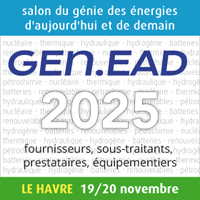octo.
29
2009 | Commission proposes legislation to limit the CO 2 emissions from light commercial vehicles
The European Commission today proposed legislation to reduce the average CO 2 emissions of light commercial vehicles (vans) to 175 grams per kilometre. The proposal will be phased in from 2014 to 2016, and contains a long term emission reduction target of 135 g/km by 2020. The format of the proposed legislation is similar to the proposals on passenger cars agreed at the end of 2008. It is one of the last outstanding elements of the EU's strategy to improve the fuel economy of light-duty vehicles which account for about 12% of the EU's total carbon emissions. The proposal underlines the EU's commitment to putting in place concrete measures to deliver on its greenhouse gas commitments in the run-up to the Copenhagen climate conference.
Environment Commissioner Stavros Dimas said: "This legislation is another important step for the EU in combating climate change and reaffirms the EU's commitment and leadership ahead of the Copenhagen conference. As well as ensuring the vans sector make a fair contribution to efforts to tackle climate change it will also generate important fuel-savings for consumers and stimulate innovation in industry which will enable them to take full advantage of the transition to a low-carbon economy. "
How the legislation will work
The draft legislation is closely modelled on the legislation on the CO 2 emissions from passenger cars 1 . This proposal provides for average CO 2 emissions from new vans to be reduced to 175 g/km. This will be phased in from 2014 to 2016. For the long-term it provides for average emission to be reduced to135 g/km by 2020. Emissions limits are set according to the weight of the vehicle, using a limit value curve. The curve is set in such a way that a fleet average of 175 grams of CO 2 per kilometre is achieved. Manufacturers must ensure that from 2014 vehicles registered in the EU during that time have average emissions that are below the limit value curve, when 75% of the vehicles are taken into account. For the calendar year 2015, the percentage rises to 80% and from 2016, 100% of the fleet have to comply on average. Only the fleet average is regulated, so manufacturers will still be able to make vehicles with emissions above the limit value curve provided these are balanced by other vehicles which are below the curve.
Which vehicles are affected?
The vehicles affected by the legislation are vans, which account for around 12% of the market for light-duty vehicles. This includes vehicles used to carry goods weighing up to 3.5t (vans and car-derived vans, known as N1) and which weigh less than 2610kg when empty. Manufacturers' progress will be monitored each year by the Member States on the basis of new vehicle registration data.
Will there be penalties for manufacturers?
The proposal provides manufacturers with an incentive to reduce CO 2 emissions through an excess emissions premium to be paid if average emission levels exceed the limit value curve. This premium will be based on the number of grams per kilometre (g/km) that the manufacturer’s registered vehicles are above the curve on average, multiplied by the number of vehicles. In an initial period until 2018, the level of the premium will be €5 for the first g/km above the curve, €15 for the second g/km, €25 for the third and €120 for every further g/km exceeding the limit value curve. From 2019, the first g/km will cost €120 per vehicle. This value is higher than the one for cars (€95) because of the differences in compliance costs. Manufacturers are expected to meet the target set by the legislation, so significant penalties should be avoided.
Competitiveness through flexibility
This proposal aims to safeguard Europe's competitiveness by stimulating the development of cutting edge automotive technologies. In order to promote all innovations, a mechanism is included to credit vehicles which are fitted with innovations which reduce emissions but are not covered by the standard CO 2 emission test procedure. Further vehicles with extremely low emissions (below 50g/km) will be given additional incentives up to 2018.
A degree of flexibility is built into the proposal. Manufacturers may group together to form a pool and act jointly in meeting the specific emissions targets. Independent manufacturers who sell fewer than 22,000 vehicles per year can also apply to the Commission for an individual target instead.
Next steps
The proposal will now be communicated to the Council and to the European Parliament as part of the co-decision legislative procedure.
Source : Communiqué Commission Européenne
Voir la fiche de l'entreprise Commission Européenne
| |
|
|






  
|